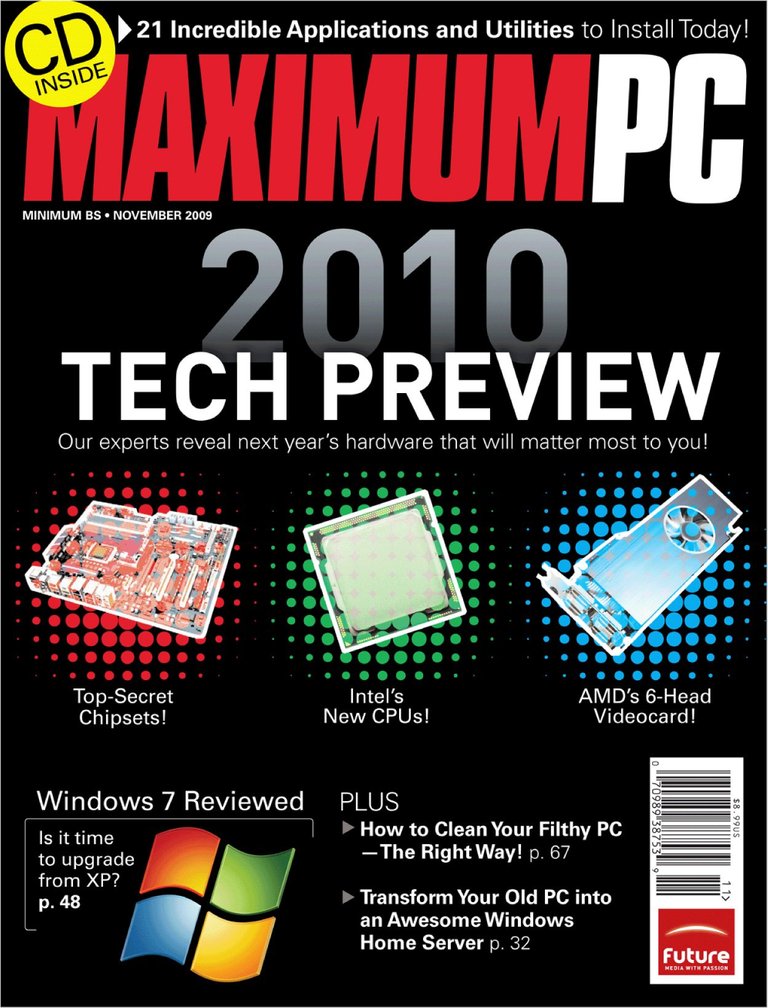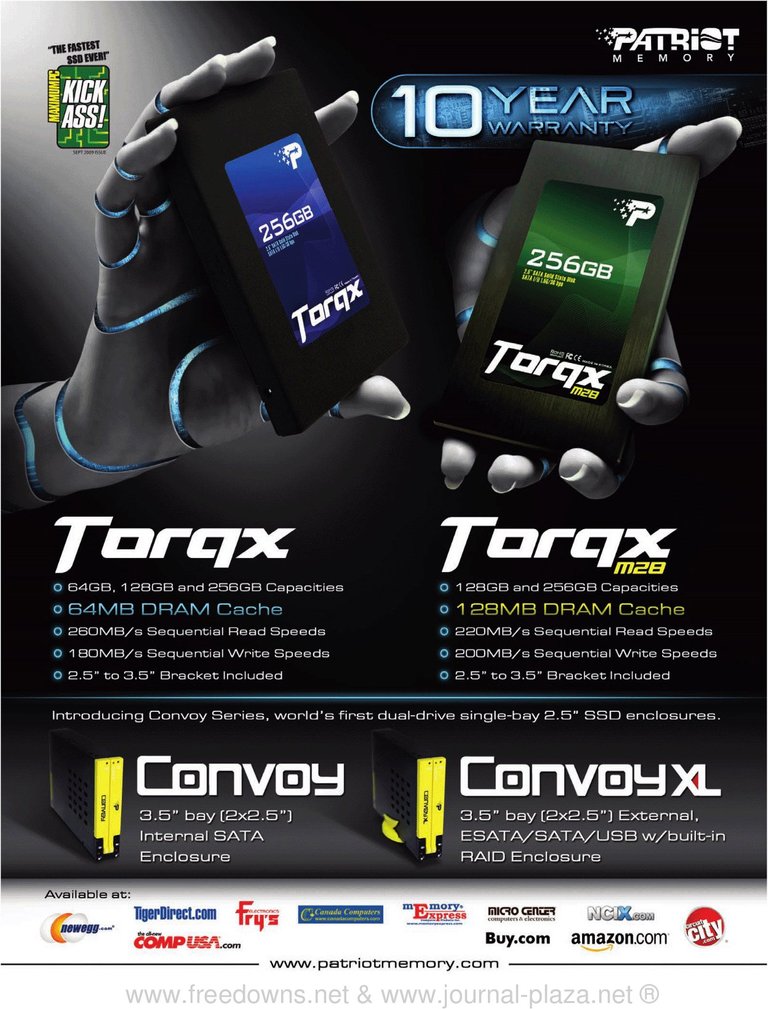Maximum PC (November 2009)
(Edited)

Cover of the November 2009 issue of Maximum PC
Maximum PC has always been my favorite PC magazine even back in its earliest days when it was called boot. Amazingly enough, it is still being published today. The November 2009 issue includes:
Features
- Tech Preview - A look ahead to the new tech coming out in 2010. This includes Intel's new line of Lynnfield based processors (Core i7-870, Core i7-860, Core i5-750), new Bulldozer based chips from AMD, PCI Express 3.0, new Evergreen based AMD graphics chip (RV840), new GT300 based nVidia cards, Intel's Larrabee, 3TB+ hard drives, SSDs approach 500GB, USB 3.0, DisplayPort, and more.
- Windows Home Server - A how to guide for Windows Home Server. This iteration of Microsoft's OS was predicated on the belief that it would be common for people to store all of their music, movies, etc. on one PC and access it from all over your house. While some people indeed do this, it turns out most people don't need more than a simple NAS or regular iteration of Windows (or even Linux) with some shared space. Windows Home Server seemed to survive for all of about 5 minutes.
- Windows 7 - The brand new Windows 7 on the other hand was a worth upgrade, at least if you were going to 64-bit. This review details all the new features and improvements.

Table of Contents from the November 2009 issue of Maximum PC
Departments
QuickStart
- News - News from SIGGRAPH, including the release of OpenGL 3.2 and the OptiX ray-tracing engine from nVidia; Sony introduces new type of Lithium-Ion battery; new Lynnfield motherboards support SLI, and more.
- The List - Ten examples of artwork etched into silicon chips, including Dilbert on the MIPS R10000, the Stay Puft Marshmallow Man on a 1988 Weitek math coprocessor, Mr. T on a T1 transceiver integrated circuit, and more.
R&D
- White Paper - A look inside the design and manufacturing process of a modern CPU.
- Autopsy - A teardown of the Creative Vado HD Camcorder. This was a mini HD camcorder with a 640x240 LCD screen, 8GB of storage (enough for about 8 hours), and a low power ARM processor for encoding H.264 video.
In the Lab
- Reviews
- Cyberpower Gamer Xtreme 3200 - Features a 2.66GHz Core [email protected], 4GB DDR3/1600 RAM, EVGA GeForce GTX 295, Seagate 1.5TB Barracuda 7200.11, and more for $1645.
- Intel X-25M 160GB MLC SSD - A decent SSD but at $440 it was pretty expensive.
- IBuyPower M865TU Gaming Notebook - Features a 3.06GHz Core 2 Duo Mobile T9900, 4GB DDR3/1066 RAM, Nvidia GeForce GTX 260M GPU, 500GB Seagate hard drive, and more for $2000.
- Thermaltake ISGC-300 Fan - A pretty good CPU cooler for $60.
- Asus Xonar HDAV 1.3 SLI - This sort of thing was necessary because of Blue-ray DRM and the lack of a protected path in Vista.
- Best of the Best - This month, a brief look at what hte editors consider to be the best budget CPU, an Intel 2.66GHz Core i5-750 for about $200.
Letters
- Doctor - Questions answered about shrinking SSD free space, malware and fake anti-virus apps, flaky USB ports, the right amount of RAM, and more.
- Comments - Letters from readers commenting upon the Thermalright U120-E CPU cooler, the ID Vault USB token/key, music and movie DRM, discreet sound cards vs. onboard audio, and more.

BAck cover of the November 2009 issue of Maximum PC
Read more: https://www.megalextoria.com/wordpress/index.php/2022/10/07/maximum-pc-november-2009/
0
0
0.000
https://twitter.com/14313770/status/1579837967027548163
The rewards earned on this comment will go directly to the people( @darth-azrael ) sharing the post on Twitter as long as they are registered with @poshtoken. Sign up at https://hiveposh.com.
Yay! 🤗
Your content has been boosted with Ecency Points, by @darth-azrael.
Use Ecency daily to boost your growth on platform!
Support Ecency
Vote for new Proposal
Delegate HP and earn more
I have to admit it without much shame, until recently when I had to change my computer, I was still using Windows seven. It is a pity that the new computer brought Windows 10. It gives me many problems.
When Windows 10 came out it didn't seem so bad. But as time has gone on, with newer updates, it has become much more of a resource hog. While there are a few Windows 10 features I like, overall Windows 7 was much better.